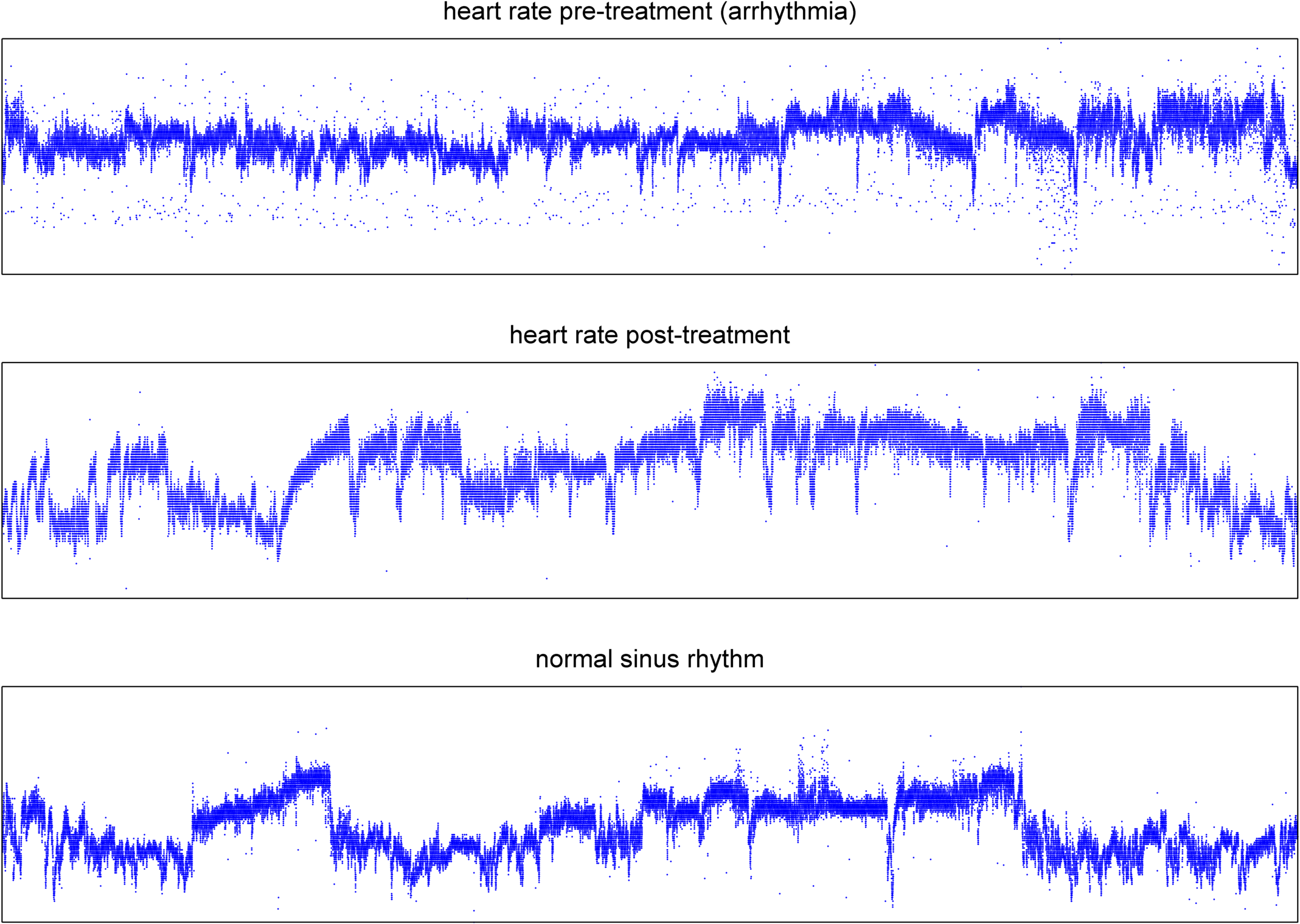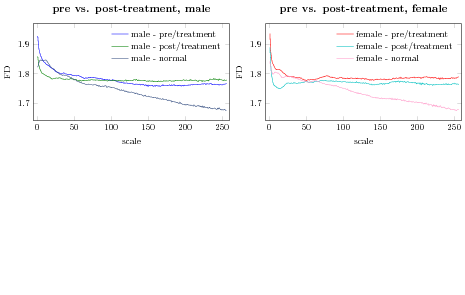Section: New Results
Quantification of Heart's Recover by Multiscale Complexity Analysis of Heart Rate: a Validation Study
Participants : Binbin Xu, Hussein Yahia, Rémi Dubois.
Background : Heart rate analysis is the common analysis of heart's function. After the drug treatment of cardiac arrhythmia, the heart rate looks like the same as the group with normal sinus rhythm.
|
Problem : However, the visibly "same dynamics" for post-treatment & normal group does not reflect the true intrinsic dynamics of the heart. Methods : Using multi-scale complexity analysis to quantify and qualify the heart rate's dynamics.
Results : Thought the analysis shown in time domain that the dynamics of post-treatment and normal group looked similar. Their dynamics is completely different : (1) for normal heart rate, the multiscale fractal dimension is almost linearly decreased – invariance; (2) for arrhythmic heart rate before and after treatment, they converged to a certain value. All these suggested that item after the drug treatments, the heart's function is not still fully restored and more recovering time is needed. The multiscale complexity analysis can be used to quantify the heart function's recovering and optimize the post-treatment.
One submitted publication.




